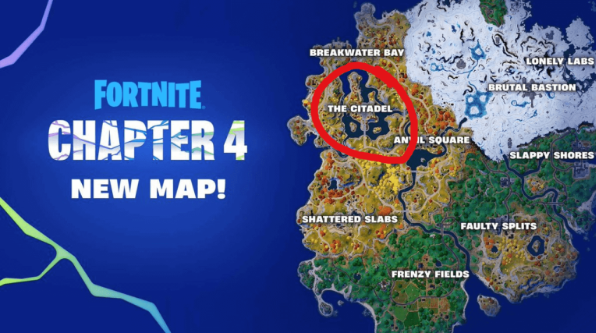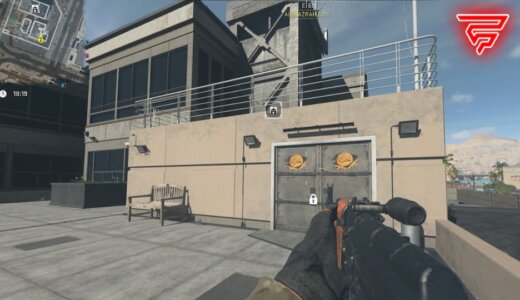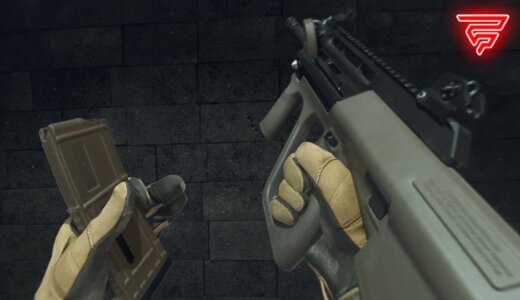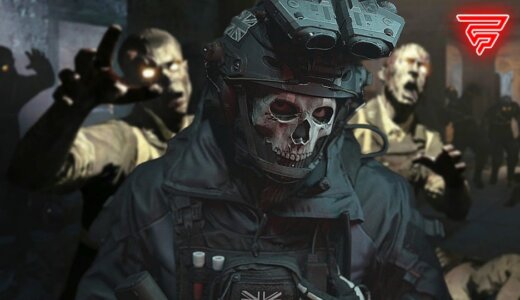Fortnite is a popular online multiplayer game that has taken the world by storm. The game is known for its unique gameplay, which involves building structures and fighting off hordes of enemies. One of the most important aspects of the game is the Fortnite map, which is constantly changing and evolving.
The Fortnite map is a vast and complex environment that players must navigate in order to succeed. The map is divided into different areas, each with its own unique features and challenges. Players must explore these areas, gather resources, and build structures in order to survive.
One of the most interesting things about the Fortnite map is that it is constantly changing. The developers of the game regularly release updates that introduce new areas, items, and challenges. This means that players must always be on their toes and ready to adapt to new situations. By staying up-to-date with the latest changes to the Fortnite map, players can gain a competitive edge and increase their chances of success.
Evolution of the Fortnite Map
Fortnite has undergone significant changes since its release, and the map has been no exception. In this section, we’ll take a closer look at the evolution of the Fortnite map, including its original layout, significant map updates, and seasonal changes.
Original Map Layout
When Fortnite was first released, the map was relatively small and consisted of several distinct areas, including Pleasant Park, Retail Row, and Tilted Towers. The map also featured a central island surrounded by water, with smaller islands scattered around the edges.
Significant Map Updates
Over time, the Fortnite map has undergone several significant updates. One of the most notable updates was the addition of new areas, including the desert biome in Season 5 and the snow biome in Season 7. These updates not only added new areas to explore but also introduced new gameplay mechanics, such as the ability to slide on ice in the snow biome.
Another significant update was the addition of new landmarks, such as the giant metal llama in the northwestern corner of the map and the giant wooden chair near Lazy Lake. These landmarks not only add visual interest to the map but also serve as useful navigation points for players.
Seasonal Changes
In addition to major updates, the Fortnite map also undergoes seasonal changes. For example, during the Halloween season, the map is decorated with spooky decorations and features a special event called “Fortnitemares.” During the winter season, the map is covered in snow and features holiday-themed decorations.
Overall, the Fortnite map has evolved significantly since its release, with new areas, landmarks, and seasonal changes keeping the gameplay fresh and exciting for players.
Current Fortnite Map Features
Landmarks and Locations
Fortnite’s current map features a wide range of landmarks and locations that players can explore and loot. These landmarks include the Abandoned Villa, Beach Houses, Pleasant Piazza, Ruined Reels, Reckless Railways, Ritzy Riviera, and Lavish Lair. Each of these landmarks offers unique opportunities for players to find loot and engage in battles with other players.
Biomes and Terrain
The current Fortnite map features a variety of biomes and terrain types, including snow-covered areas, forests, deserts, and more. Each of these biomes has its own unique features and challenges, such as limited visibility in the snow-covered areas and a lack of cover in the desert regions. Players must adapt their strategies to the terrain to survive and thrive in the game.
Loot and Resource Distribution
The loot and resource distribution on the current Fortnite map is carefully balanced to provide players with a fair and enjoyable gameplay experience. Players can find weapons, ammunition, and other useful items scattered throughout the map, with higher-tier loot being more common in certain areas. Resources such as wood, stone, and metal can be harvested from trees, rocks, and other objects throughout the map to build structures and fortifications.
Overall, the current Fortnite map offers a diverse and exciting gameplay experience for players of all skill levels. With its wide range of landmarks, biomes, and loot distribution, players can enjoy hours of thrilling battles and exploration.
Gameplay Dynamics on the Map
Fortnite’s Chapter 5 introduces a brand-new map with various dynamic gameplay elements. In this section, we will explore the gameplay dynamics of the map, including safe zone mechanics, mobility and transport, and player-constructed structures.
Safe Zone Mechanics
Safe zones are crucial in Fortnite’s gameplay, as they determine where players can safely move and engage in combat. In Chapter 5, the safe zone mechanics have been updated to create a more dynamic and challenging gameplay experience. The safe zone now moves more frequently, and players need to be more aware of their surroundings to avoid getting caught in the storm.
Mobility and Transport
Mobility and transport play a significant role in Fortnite’s gameplay, allowing players to move around the map quickly and efficiently. Chapter 5 introduces new modes of transport, including a moving train that players can hijack, adding a dynamic twist to the game. Other forms of transport, such as cars and boats, are also available, providing players with more options to navigate the map.
Player-Constructed Structures
Player-constructed structures are an essential aspect of Fortnite’s gameplay, allowing players to create their own cover and fortifications. In Chapter 5, players can construct structures more quickly and efficiently, thanks to the new building mechanics. This allows for more strategic gameplay, as players can quickly build structures to defend themselves or gain an advantage over their opponents.
Overall, Fortnite’s Chapter 5 introduces a new map with various dynamic gameplay elements that enhance the overall gameplay experience. The updated safe zone mechanics, new modes of transport, and improved building mechanics provide players with more options to navigate the map and engage in combat.
Strategic Hotspots
Fortnite’s map is filled with a variety of locations that offer different levels of risk and reward. Knowing where to drop can be the difference between a quick elimination and securing a Victory Royale. In this section, we’ll explore some of the most strategic hotspots on the map.
Popular Drop Zones
Some locations on the map are more popular than others, making them high-traffic areas with lots of loot and players. Tilted Towers, for example, is a well-known drop zone that offers a lot of loot but also attracts a lot of players. Other popular drop zones include Retail Row, Salty Springs, and Pleasant Park. These areas can be great for players who want to engage in early-game fights and rack up eliminations, but they can also be high-risk areas where it’s easy to get eliminated quickly.
High-Risk vs. Low-Risk Areas
Players who prefer a more cautious approach may want to consider dropping in low-risk areas of the map. These locations tend to be less popular and offer fewer resources, but they also tend to have fewer players. Some low-risk areas include Lonely Lodge, Junk Junction, and Haunted Hills. These areas can be great for players who want to loot up and avoid early-game fights, but they may need to travel farther to reach the safe zone.
On the other hand, high-risk areas like Tilted Towers, Retail Row, and Salty Springs offer a lot of resources and action but come at the cost of a higher risk of elimination. Players who drop in these areas should be prepared for a fight and have a solid strategy in place.
Contested Territories
Some areas of the map are hotly contested by players, making them high-risk, high-reward zones. These areas include places like the central island, which is home to the Zero Point, and the new locations added in Chapter 5 Season 1 like Ritzy Riviera and Hazy Hillside. These areas offer a lot of loot and action, but players should be prepared for a fight as they are likely to encounter other players.
In conclusion, choosing where to drop in Fortnite can be a strategic decision that can impact a player’s chances of survival. Whether a player prefers a high-risk, high-reward approach or a more cautious playstyle, there are plenty of options on the map to suit their needs.
Map Accessibility and Navigation
Navigating the map in Fortnite can be a daunting task for new players. However, the game offers various features to make the map more accessible and easier to navigate. This section will explore some of these features.
User Interface Integration
Fortnite’s user interface (UI) is designed to help players navigate the game world. The UI displays important information such as the player’s location, the location of their teammates, and the location of objectives. The UI also displays a mini-map that shows the player’s location in relation to the rest of the game world.
Map Visibility and Secrets
Fortnite’s maps are full of secrets and hidden locations. While some of these locations are easy to find, others require players to explore the map in detail. The game offers various tools to help players find these secrets, such as treasure maps and clues.
Challenges and Missions
Fortnite’s challenges and missions often require players to navigate the map to complete objectives. These challenges can be found in the game’s Battle Pass, which players can purchase to gain access to exclusive content. Completing these challenges can reward players with new gear, cosmetics, and other rewards.
In conclusion, Fortnite’s map is a complex and detailed world that can be challenging to navigate. However, the game offers various features to make the map more accessible and easier to explore. Players can use the UI to navigate the game world, find secrets using treasure maps and clues, and complete challenges to earn rewards.
Community and Map Development
Fortnite has a thriving community of players and map creators who contribute to the game’s development. The developers take player feedback seriously and often make changes to the game based on it. Additionally, the game features a Creative Mode that allows players to create their own maps, which can be shared with others.
Player Feedback Influence
Player feedback has a significant impact on Fortnite’s map development. The developers regularly monitor player feedback, and they have made several changes to the game based on it. For example, players have requested more variety in the game’s maps, and the developers have responded by adding new locations and landmarks.
Collaborative Events and Areas
Fortnite also features collaborative events and areas, where players can work together to achieve a common goal. These events and areas are often temporary and are updated regularly. They provide a unique opportunity for players to work together and contribute to the game’s development.
Creative Mode Contributions
Creative Mode is a popular feature in Fortnite that allows players to create their own maps. These maps can be shared with others, and players can even collaborate on them. Many of the game’s most popular maps were created by players using Creative Mode. The developers have also featured some of the best player-created maps in the game’s official playlists.
In conclusion, Fortnite’s community and map development are integral to the game’s success. The developers take player feedback seriously and regularly make changes based on it. Additionally, the game’s Creative Mode allows players to create their own maps and contribute to the game’s development. The collaborative events and areas also provide a unique opportunity for players to work together and contribute to the game’s development.
Technical Aspects of the Map
Rendering and Performance
Fortnite’s map is a complex environment that requires efficient rendering and performance to ensure smooth gameplay. The game uses a technique called Level of Detail (LOD) to render objects in the game world. This technique reduces the level of detail in objects as they move further away from the player’s viewpoint, allowing the game to render more objects at once without sacrificing performance.
Additionally, Fortnite’s map is designed to be highly optimized for performance. The game’s developers have implemented various techniques to reduce the amount of data that needs to be rendered and transmitted over the network, such as using procedural generation to create terrain and using simple geometric shapes for buildings.
Map Update Deployment
Fortnite’s map is updated regularly to keep the game fresh and exciting for players. These updates are typically deployed in two ways: server-side updates and client-side updates.
Server-side updates are changes made to the game’s servers that all players can access without needing to download anything. These updates can include changes to the map’s layout, new game modes, and bug fixes.
Client-side updates, on the other hand, require players to download and install a new version of the game. These updates typically include new content such as skins, weapons, and other cosmetic items.
Server-Side vs. Client-Side Elements
Fortnite’s map contains both server-side and client-side elements. Server-side elements include the map’s layout, game modes, and other fundamental aspects of the game that are controlled by the game’s servers. Client-side elements, on the other hand, include cosmetic items, player skins, and other non-essential aspects of the game that are controlled by the player’s device.
Overall, the technical aspects of Fortnite’s map are designed to provide players with a smooth and enjoyable gameplay experience while also allowing the game’s developers to make regular updates and improvements to the game world.
Comparative Analysis
Fortnite Map vs. Other Battle Royales
Fortnite has a unique map compared to other popular battle royale games like PUBG and Apex Legends. The Fortnite map features a colorful and vibrant world with various landmarks, cities, and towns. On the other hand, PUBG has a more realistic map with a military feel, while Apex Legends has a futuristic map with high-tech cities and unique terrains.
In terms of size, Fortnite’s map is relatively smaller than PUBG’s map, but it is still large enough to offer a wide range of gameplay experiences. The smaller size of the map allows for more action-packed and fast-paced gameplay, while the larger size of PUBG’s map offers more strategic and slower-paced gameplay.
Another significant difference between Fortnite’s map and other battle royale games is the addition of building mechanics. Players can gather resources and build structures to gain an advantage over their opponents. This unique feature adds a new layer of strategy and gameplay to Fortnite that is not present in other battle royale games.
Evolution Across Gaming Genres
The Fortnite map has undergone significant changes since its initial release in 2017. The map has evolved with each new season, adding new landmarks, areas, and biomes. The map changes keep the gameplay fresh and exciting, and it also allows players to explore new areas and discover new strategies.
One of the most significant changes to the Fortnite map was the introduction of Chapter 2. The new map featured new landmarks, including a new island, and a new water-based gameplay mechanic. This change added a new dimension to the gameplay and allowed for more exploration and discovery.
Overall, the Fortnite map stands out from other battle royale games with its unique and colorful world, building mechanics, and constant evolution. The map changes keep the gameplay fresh and exciting, and it offers a wide range of gameplay experiences for players of all skill levels.
Frequently Asked Questions
What are the key features of the Fortnite map in Chapter 4?
The Fortnite map in Chapter 4 has a variety of features that make it unique and exciting. The map is an island with different locations such as cities, forests, and beaches. Players can explore the island and find weapons, resources, and vehicles to help them survive. The map is also constantly changing, with new updates and events that keep the game fresh and interesting.
How has the Fortnite map evolved since Chapter 1?
The Fortnite map has undergone many changes since Chapter 1. The original map was much smaller and had fewer locations. Over time, the map has expanded and new locations have been added. The terrain has also changed, with new mountains, rivers, and other natural features. In addition, the map has been updated to reflect different seasons and events, such as Halloween and Christmas.
What updates have been made to the Fortnite map for the 2023 season?
For the 2023 season, the Fortnite map has been updated with new locations and features. One of the most significant changes is the addition of a new city called Neo Tilted. This city has a futuristic theme and is full of high-tech buildings and vehicles. The map also has new areas such as a desert biome and a volcano. These areas have unique challenges and resources that players can explore.
Are there any significant changes to the Fortnite map in Chapter 4 Season 2?
Chapter 4 Season 2 of Fortnite introduced several significant changes to the map. One of the most notable changes was the addition of new spy-themed locations such as The Agency and The Grotto. These locations had secret underground bases and high-tech gadgets that players could use. The map also had new challenges and events related to the spy theme.
Can players expect the return of the original (OG) Fortnite map?
At this time, there is no official word on whether the original (OG) Fortnite map will return. However, Epic Games has stated that they are always looking for ways to keep the game fresh and interesting. It is possible that the OG map could return in the future, but players will have to wait and see.
What are the latest additions to the Fortnite map in Chapter 4 Season 3?
Chapter 4 Season 3 of Fortnite introduced several new locations and features to the map. One of the most significant additions was the Coral Castle, a new location with a underwater theme. The map also had new areas such as the Craggy Cliffs and the Fortilla. These areas had unique challenges and resources that players could explore.






